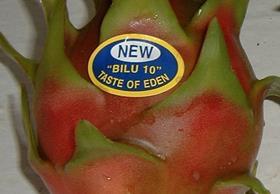
The breeding and development of new varieties of pitaya in Israel is a vital step towards fulfilling the country’s long-term target of boosting exports and offering year-round supplies.
Israeli varieties of pitaya are easily distinguishable by their superior taste and the colour of their flesh. The Bilu series developed by Yossi Zaphrir, owner of Top Eden Fruits, has pink or purple flesh, whereas the Venus series, bred by Professor Yossi Mizrachi at the University of the Negev in Beer-Sheva, is red inside.
In general, these pink-, purple- and red-fleshed varieties benefit from a decent price advantage over white-fleshed varieties.
Israeli pitayas can be grouped into two categories: summer varieties that are harvested between July and December, and winter varieties, developed by Mizrachi in the south of the country and dubbed Desert King, which are harvested from January to April.
In addition, new hybrid varieties are being selected that offer improved taste, longer shelf-life, earlier flowering and a more even flower spread to provide a steady availability of fruit.
From a great number of crosses, Zaphrir of Top Eden Fruits is moving forward with 10-15 selected hybrids. At his production sites, agrotechnical experiments are also conducted to discover improved agrotechnical techniques.
Top Eden Fruits’ pitaya exports already go to the UK, as well as to continental Europe and Canada. However, exporters are now turning their attention to the US following the opening-up of the market at the end of 2015.
With new opportunities revealing themselves, Top Eden has already increased its production area for pitaya, despite limits due to an acute shortage of the necessary manual labour.



